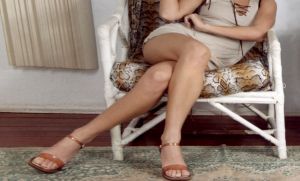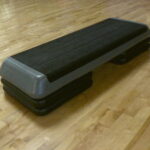You can tone your lower body without the use of gym equipment.
Many exercises include the major muscle groups of the lower body. Those exercises include cardiovascular workouts like walking, running, cycling, biking, skiing, using across-trainer or StairMaster, and aerobics. There are plenty more exercises which work out the lower body and help tone the muscles. They are not cardiovascular, but they are effective with repetition.
Lower Body Muscles
Here is a very basic guide to the muscles of the lower body that can be toned without the use of gym equipment. Included are nicknames, and a general description of the muscle. This guide is intended for beginners.
“Glutes” – Glutes are your gluteal muscles, or your rear end, in general terms.
Hammies” – Refers to the hamstring muscles which are located are the back of the thigh muscles that run from the glues to the back of the knee.
Hip Flexors” – The hip flexors are the group of muscles in the pelvic region that help with flexing the hips and with rotating the lower back.
“Quads” – The quadriceps are basically the upper, frontal thigh muscles.
Toning Lower Body without Gym Equipment
Toning the lower body without the use of gym equipment is possible.
For those unfamiliar with the best ways to tone their lower bodies without expensive gym equipment, here is a basic guide.
Warm up the Lower Body
Warm up the lower body muscles by marching in place for three to five minutes. Start with easy walking steps, and gradually add arm movement. Make a loose fist with each hand and place elbows at your side, with hands in front of you. When you lift the right leg in the standing march, the left arm comes forward in a gentle motion. When the left leg comes up, the right arm comes forward in a gentle motion. It is a natural rhythm once you start.
To increase the blood flow and get your heart pumping, raise the knees higher, and march in place at a faster rate. Spend another two to three minutes “bringing it down,” by slowing your march pace, lifting your knees less high, and bringing your hands down to past your waist.
Lunges
If you’re already cringing, then you familiar with lunges. They are sometimes used as warm ups for aerobics.
You will need a little room to go forward. Lunges can be done in the living room, a hallway, or outdoors at a park or on a track.
Lunges are the best way to tone the major muscles in your lower body, including your quadriceps (front of the thigh), there is a reason that lunges are a favorite exercise incorporated into fitness programs designed by personal trainers. When an entire is completed, and the exercise is continued regularly, the exerciser will see results.
To do a lunge, start by standing tall with good posture. Place hands on waist for stability. Take a step forward with your right foot. The step should be wide enough that when you bend the left knee down towards the floor, the right knee is alignedwith the right ankle. The right shin should be vertical, and the knee should not go past the ankle. You should be able to see your foot. Make any adjustment to the form when you dothe first few lunges.
The left knee should come towards the floor, but not touch it. The left shin will be almost parallel to the floor, and you will be resting on the ball and toes of the left foot.
Slowly bring the left foot to meet the right foot, standing tall again. That is one lunge. Start the next lunge by placing the left forward forward instead of the right. Alternate left, right, left, etc. The lunge will be felt in the glutes, quads and hips. Do an equal amount on each side.
Lunges can be practiced in place, or by performing “walking” lunges, and moving forward with each lunge.
Start with two, 10, or 20, however many you can do. Do not do lunges every day. They can be done at the most every other day.
Squats
Squats are often done with weights, but can also be effective without the use of gym equipment. First, stand erect and separate your feet so that they are shoulder-width apart. Do not make the mistake of going too wide. Stand in front of a mirror if it is easier for you.
Maintain a good posture, with arms loosely at sides. Bend at the knees, moving the body into a sitting position. As you bring the body down, slowly raise your straight arms in front of you. This exercise can be done slowly. Let the body find its own rhythm.
Squats work the quads, the hamstrings, glutes, the calves and the hip flexors.




